
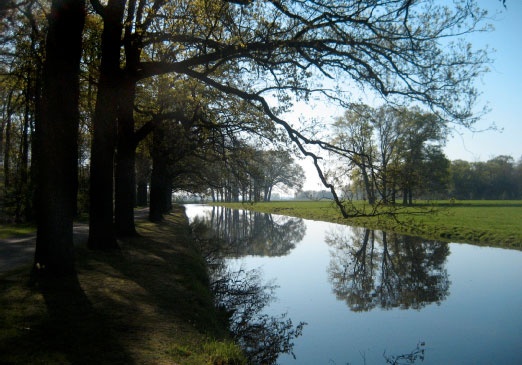
Dutch landscape is defined by dunes and dikes. Natural forces created defenses against the sea. Where nature left gaps, man filled them in. Underneath the bogs and marshes, flat as the distant horizon, are remnants of ancient coastlines, well-suited to build upon. Duivenvoorde, an estate owned by noble families who served at the Court in The Hague occupies such a position.
Maps from 1615 onward show the parcellation surrounding the mansion. Drainage channels form a grid parallel with and perpendicular to the nearby North Sea coast. A moat defending the first donjon, dating from 1250, features bridges in the direction of the main roads. Perspective is provided by planted driveways, built later as approaches to the castle.
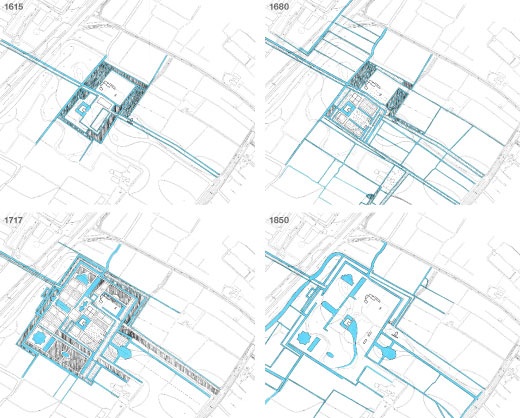
| Generations of owners have left their mark.
Formal gardens with geometric patterns were added. People planted trees
that could only be appreciated by their grandchildren. More romantic
attitudes created free-form ponds connecting the checkerboard ditches.
The bridge in front of the house was replaced by one running parallel
to the façade.
As always, time made everything vaguer and less articulate. The moment for a master plan had arrived. |
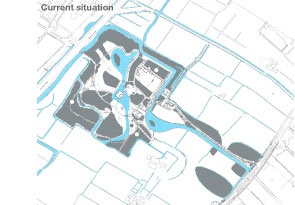 |
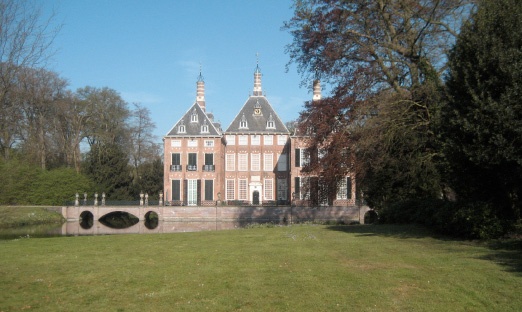
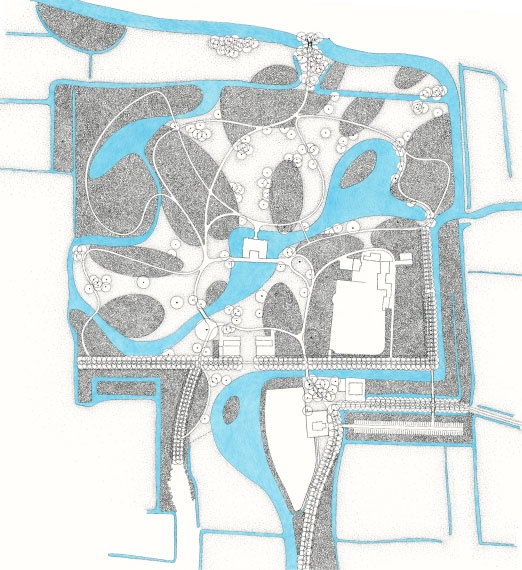
Taming chaos
In a more chaotic world the original lay-out of the park should perhaps be stressed more forcefully than was originally intended. The mix of geometric Baroque and Romantic flowing forms is not ignored, but taken as a given, inspiring new interventions.
Opening up
In the course of time, nature has made the estate more introvert. Removing undergrowth restores vistas. Trees are liberated and become visible again in the forest that obscured them. The park regains its relationship with the surrounding landscape by adding solitary trees.

Parking
Since becoming a museum in the Sixties, Duivenvoorde has grown into an important venue for cultural events. A private home became a public building. The surroundings reflect that change by stressing openness and accessibility. Cars are discreetly accommodated in a parking lot, hidden by shrubs and trees.
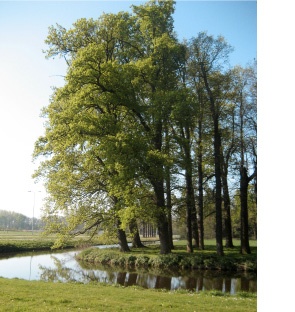
|
Renovating By definition, renovation means renewal. It demands understanding and respect for what is there and how it evolved. Study of history highlights existing qualities and points the way to their enhancement. |
Client
Duivenvoorde Foundation
Credits
Smits Rinsma Adviseurs